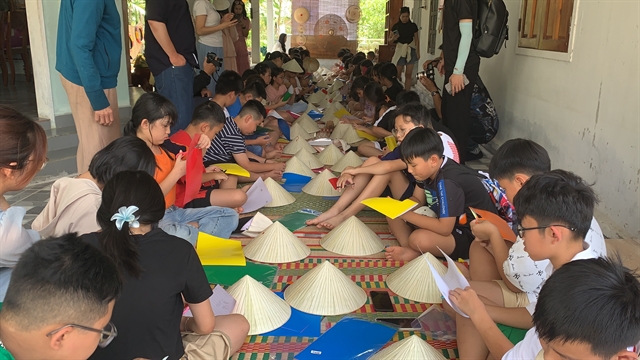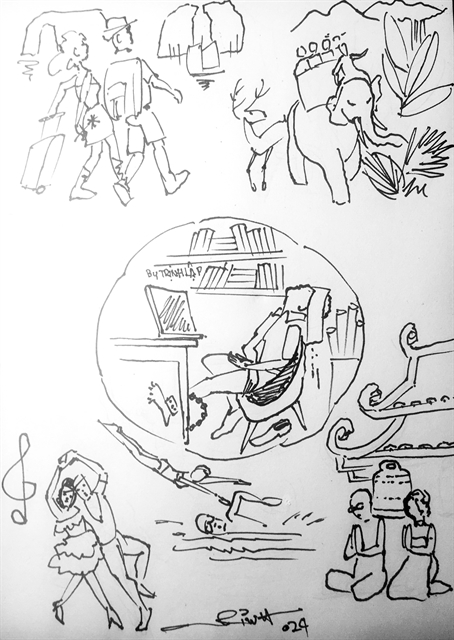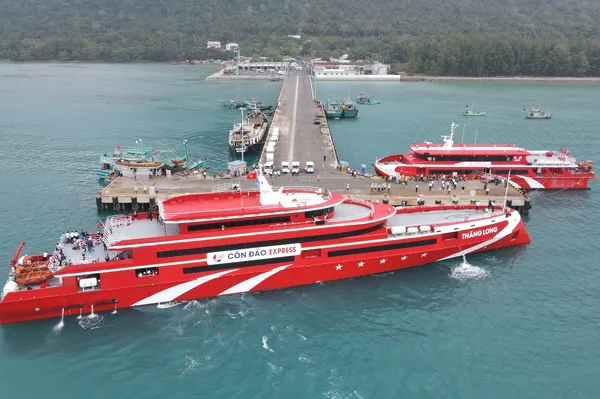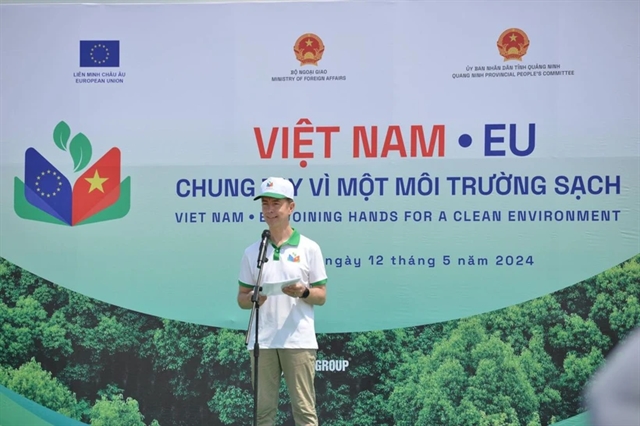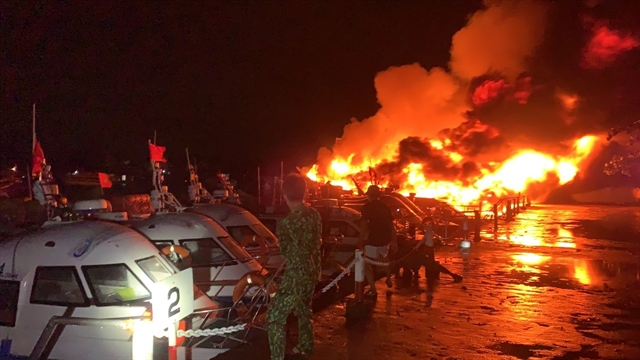 Society
Society
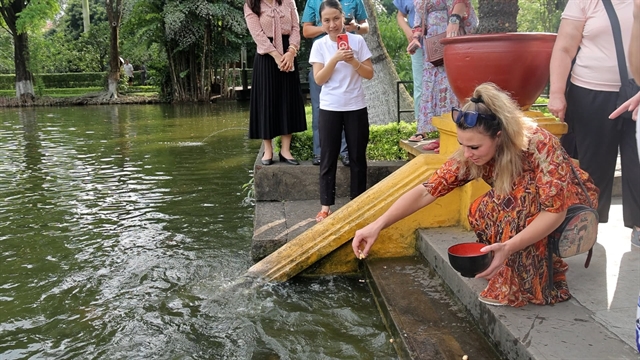
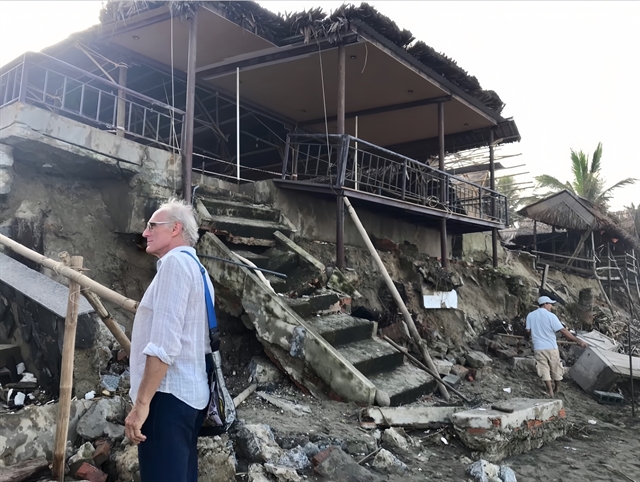 |
| A sea-front restaurant at was torn down by high tides and strong winds after a storm hit Cửa Đại beach in Quảng Nam Province. — Photos courtesy of Hương Giang |
Linh Anh
HÀ NỘI — Tiptoeing gingerly on the sandy path along the shoreline, Hương Giang tried not to let her shoes get swallowed up by the gravelly beach mixed with tiny sea shells.
The soggy sand-covered path, treaded by weary, trampling feet, led to the foot of an old crumbling stone staircase with no railings.
The staircase was fractured in half by large, shattered bricks, leaving it no longer sturdy enough to support anyone trying to climb it. Giang gazed up the staircase, she saw a devastated scene of dilapidated seafront bungalows, sitting precariously on a rocky cliff.
Their frail structures are supported by makeshift fragile-looking poles that appeared crooked after recent violent coastal storms and high tides.
The two-kilometre Cửa Đại Beach stretch in Quảng Nam Province suffered severe erosion after days of bombardment by strong waves and tropical-storm-force winds.
During the tempest, a row of clifftop restaurants on the seafront were left uninhabitable. As the ground crumbled and houses were sheared from their foundations, entire structures slid down the incline onto the beach itself.
The first rays of sunshine had chased away the rain clouds, but they weren’t strong enough to dry the earth. Giang walked along the sand paths snaking between the torn-down restaurants, scanning the area for any signs of human life. She was met only by large piles of rubble, bags of trash, old rusted fences, and smashed plastic chairs and tables.
Giang and her colleagues had a business trip to Cửa Đại Beach in Quảng Nam’s famous Hội An Town as they were involved in consulting and evaluating a natural disaster risk reduction project, initiated and aided by the State.
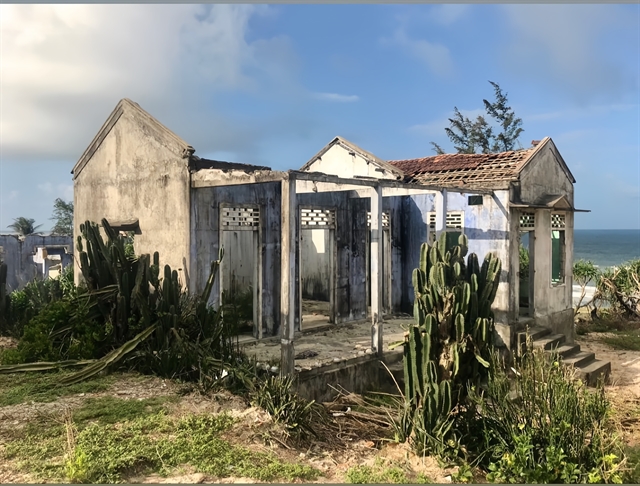 |
| An abandoned house at Cửa Đại Beach. It was devastated by severe storms, rising sea levels and ever-worsening coastal erosion. |
"I still remember that business trip, around the end of 2020, during a period when there was a severe storm in Hội An. Storms and coastal erosion remain a serious threat to coastal habitats and residents in Hội An’s Cửa Đại Beach,” she told Việt Nam News.
“These houses are seaside restaurants. The residents operate these restaurants by the coastline, some of them living right here as well. After the storm, their homes were washed away, they lost their means of livelihood. Their employees also lost jobs and faced a precarious situation,” she said.
Giang currently works at an international development co-operation organisation that involves in supporting the development of sustainable agriculture, forestry, and nature-based solutions.
Her ongoing projects focus on the environment, climate change, forestry and the management of nature reserves. Most of these projects emphasise assisting areas that face frequent natural hazards, such as the Mekong Delta, coastal areas and mountainous regions.
Giang once visited the remote villages in the northern mountainous province of Hà Giang’s Hoàng Su Phì District, where she was engaged in a natural disaster risk reduction project initiated by an American relief agency.
Torrential rains had triggered a massive hillside collapse in this region, forcing village ethnic dwellers to be permanently displaced.
Chunks of dirt, handfuls of gravel, and beads of water combined and shifted until they coalesced into a cascade that blocked roads, sheared homes from their foundations, and claimed precious lives.
“The village is inhabited by ethnic minorities, who, by their customs and culture, have constructed their houses on craggy ridgelines that are landslide-prone areas. These people need to be relocated soon,” she told Việt Nam News.
“I have always cudgeled my brain about a solution that balances national policies to ensure the safety and stability of people's lives while preserving and respecting the cultural identities of different ethnic groups,” she said.
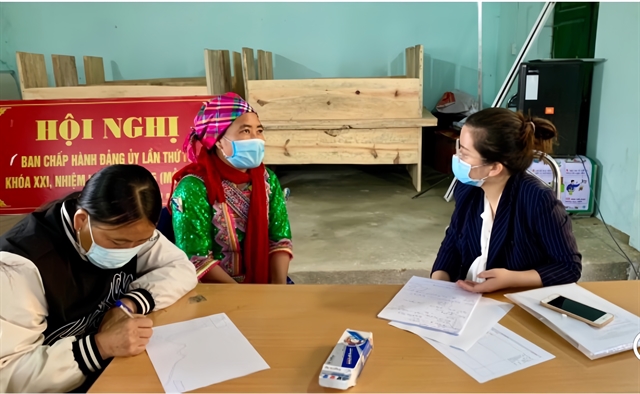 |
| Hương Giang (right) is giving consultation to two ethnic women during her project in the northern mountainous province of Hà Giang. |
Forest to fortune
Science and technology have been in place, but substantial progress has yet to be achieved. Sustainable development, land use planning, and habitation policy must be informed by a thorough understanding of the scientific prerequisites and evidence-based technical analysis.
However, the involvement of advanced scientific knowledge and the international nugget of wisdom sometimes remain incompatible with domestic projects, Giang said.
“Applying advanced science selectively and customise it to suit local conditions, while resorting to indigenous knowledge, will enhance the feasibility of projects.”
Giang believes that well-trained Vietnamese experts are the linchpin for the effective application of advanced scientific technologies. She wants to be one of them.
Thanks to her relentless efforts, Giang successfully secured the Fulbright master scholarship for the 2024-25 academic year, aided by the US government. She will major in environmental science, specialising in ecosystems.
"I want to research natural disaster risk reduction management and the impact of climate change, utilising nature-based solutions, spatial analysis and modeling."
“The Fulbright scholarship possesses a vast network of scholars, including accomplished researchers and activists across various fields. Adopting a multidisciplinary approach to addressing environmental issues and climate change is imperative,” she said.
 |
| Giang wants to research natural disaster risk reduction management and the impact of climate change, utilising nature-based solutions, spatial analysis and modeling. |
Other than the Fulbright scholarship, Giang has also received a government scholarship from another country, which includes two years of master's study from a government source and three years of doctoral study under a professor.
She said: "My practical work experience encouraged me to choose Fulbright over other option. Fulbright programme enables me to study in the US, a country known for its technological advancements and multicultural environment.
“When I participated in a project at Chiến Phố, a remote village in the northern mountainous province of Hà Giang, two years ago, I had the opportunity to work in both villages and schools.
"Although we all can see the inadequate facilities and infrastructure in schools within these highland regions through television and newspapers, numerous aspects can only be truly comprehended through firsthand observation.”
For those residing in flatlands or modern cities, traveling ten kilometres to attend classes each morning may no longer be too far. However, in the rugged terrain of the northern mountainous region, it could take half a day or more.
As a result, schools here are often divided into separate classes located miles apart. These smaller 'schools' must also be relocated away from landslide-prone areas, she said.
“I remember a middle school principal once told me that he had a modest wish: to have more hot water tanks and sufficient electricity for boarding students to bathe during the winter, thereby safeguarding their health.
“My sincere hope is that students in remote areas have access to knowledge, enjoy safe living conditions, and maintain good health, allowing them to grow up in a peaceful environment. All of these act as a catalyst, pushing me to pursue further studies in my chosen field.”
After each day-long business trip to remote forests or treacherous landscapes, Giang is exhausted, clammy, and sore. She is eager to get home and rediscover the comfort of soft mattresses, fresh vegetables, and hot water. However, she was proud of having helped to find and collect scientific data that will be available for further research.
For a moment, she was part of a long line of people who cared enough about knowing nature. She knows that someone will be there to see what she’s found. — VNS


